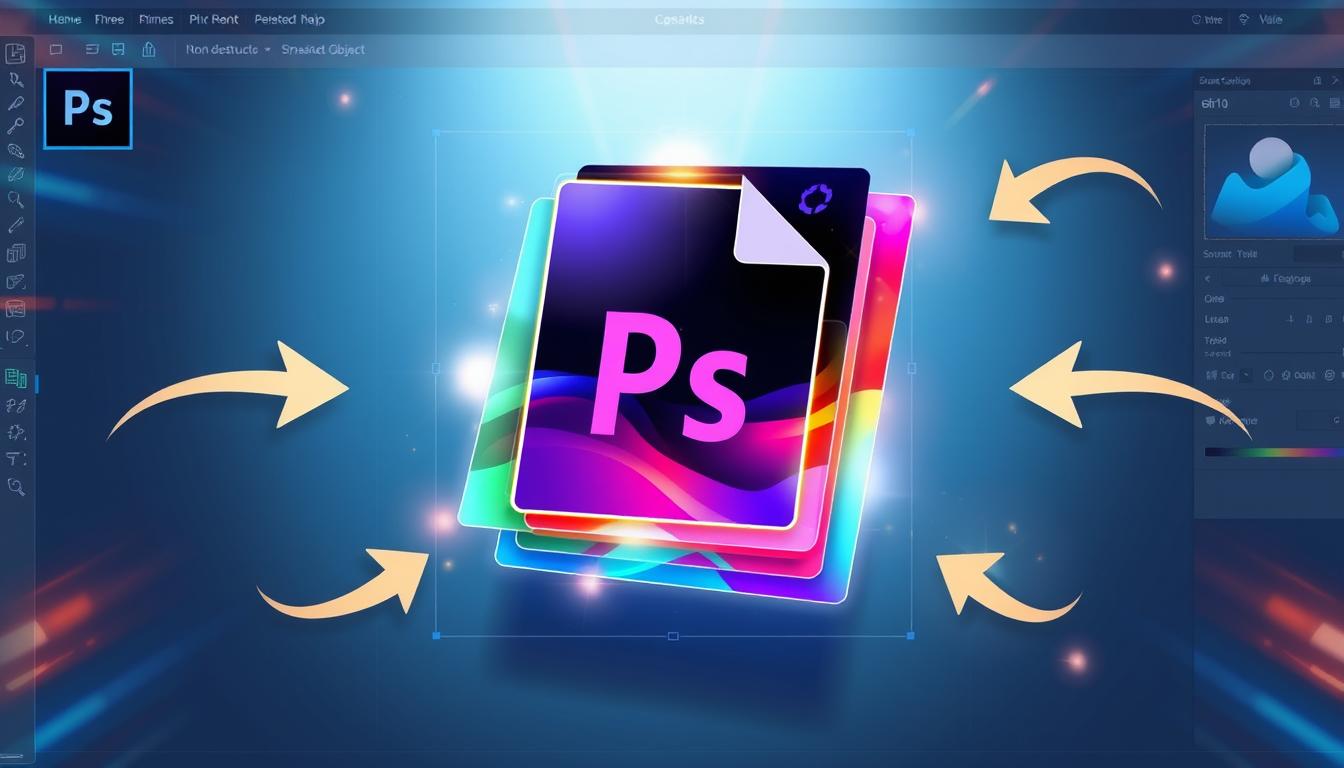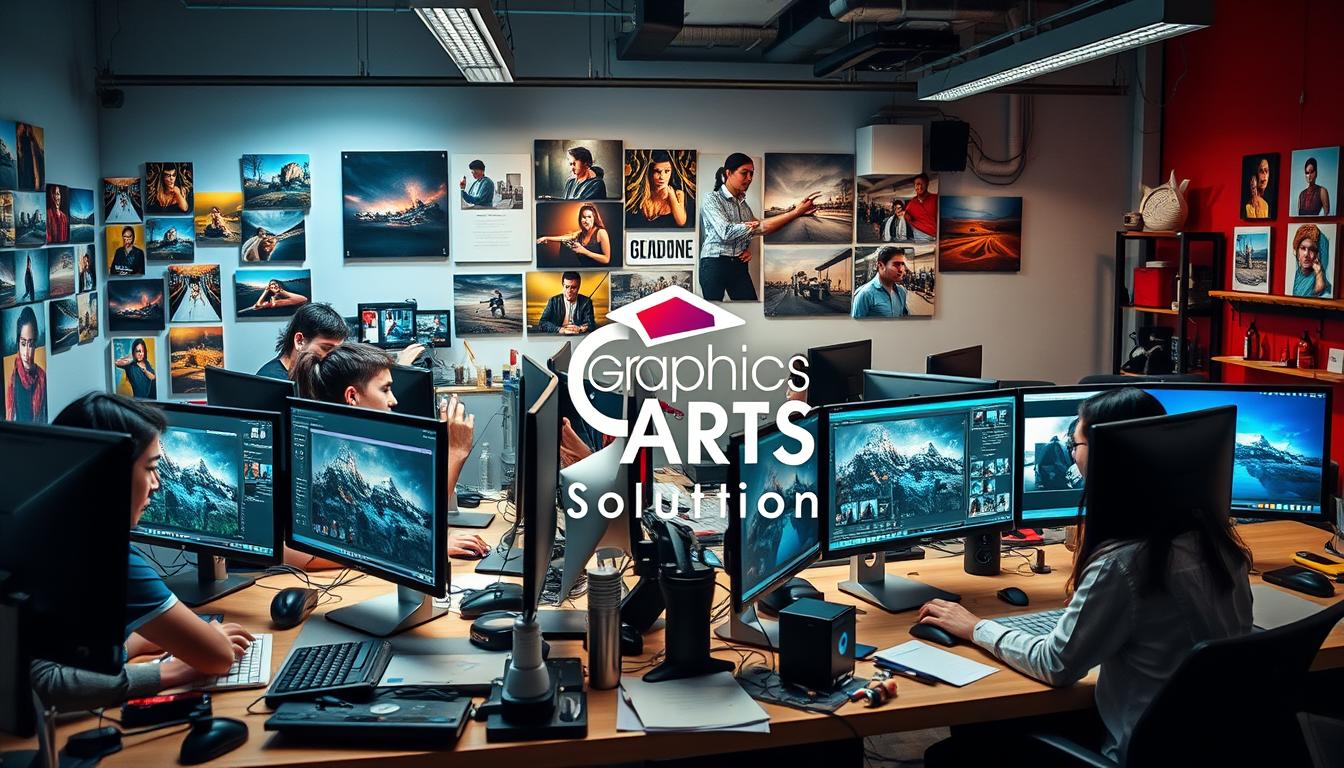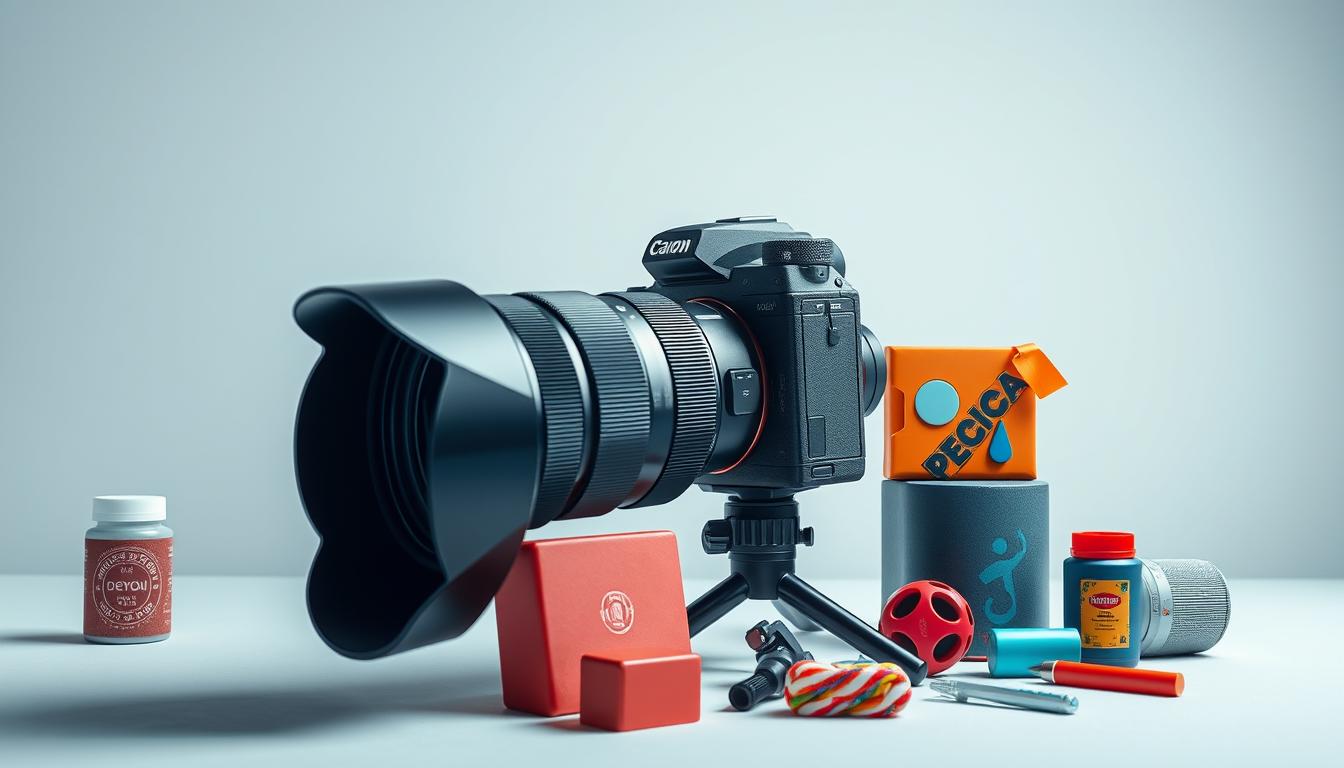Great product photos do more than just show your items—they grab attention and make customers want to buy. If you want to know how to edits product photos effectively, focusing on lighting, composition, and clean backgrounds is essential. Your online store’s visuals are the first thing people notice, so making a strong impression is key.
Professional product photo editing can make all the difference in enhancing your product images and setting your brand apart from the competition.
By editing your product photos like a pro, you can improve your online store’s visual appeal and customer engagement. In this article, we’ll explore the importance of professional product photography and provide you with the tools and expertise to take your product images to the next level.
Journey of Product Photography Editing
Product photography editing has evolved dramatically, from simple retouching to sophisticated AI-powered editing. This transformation has not only improved the quality of product images but also streamlined the editing process.
From Basic Retouching to AI-Powered Editing
In the past, product photo editing involved manual retouching, which was time-consuming and often inconsistent. However, manual editing also had its own strength—it allowed for creativity, precision, and a personal touch that automated tools couldn’t match.
Today, AI-powered editing tools have completely changed the game, making it faster and easier to achieve precise, professional edits. Still, when top-quality and refined results are needed, human editing remains the best choice.
Why Professional Product Photos Matter in 2025
In 2025, professional product photography is more important than ever for capturing customer attention and driving sales. High-quality product images not only enhance your brand’s credibility but also provide a competitive edge in the e-commerce landscape.
By leveraging advanced editing techniques and AI-powered tools, you can ensure your product photos stand out, resonate with your target audience, and ultimately boost your online sales.
Software for Product Photo Editing
Professional product photo editing requires a combination of high-quality hardware and advanced software. To achieve professional-grade edits, you need to invest in the right tools.
Top Photo Editing Software in 2025
Software you choose can significantly impact your editing efficiency and results. Here are some top options:
Professional Options
- Adobe Photoshop: Industry-standard for raster graphics editing.
- Capture One: Known for its powerful tethered shooting and editing capabilities.
Budget-Friendly Alternatives
- Affinity Photo: A professional-grade photo editing software at a fraction of Adobe Photoshop’s cost.
- Skylum Luminar: Offers AI-powered editing tools and a user-friendly interface.
AI-Powered Editing Tools Worth Investing In
AI is revolutionizing photo editing. Tools like Adobe Sensei and Skylum Luminar’s AI features can automate complex tasks, saving you time and enhancing your results. Consider investing in software that incorporates AI for tasks like background removal, object detection, and style transfer. However, if you need high-quality product photos, Photoshop and manual editing are still the way to go. The human touch delivers a more professional and polished look than AI alone.
How to Edits Product Photos: Fundamental Techniques
Good product photos don’t just rely on the camera—they come to life in the editing stage. With a few simple tweaks, an ordinary shot can turn into something that really grabs attention.
Editing is what gives photos that clean, polished look. It’s where you fix the small flaws, highlight the details, and make the image stand out in a way that feels professional.
Raw Processing Fundamentals
Raw processing is the foundation of product photo editing. It involves working with raw image files to adjust settings like exposure, contrast, and color balance. By mastering raw processing, you can significantly enhance the quality of your product images.
Exposure and White Balance Adjustments
Proper exposure and white balance are crucial for creating visually appealing product photos. Adjusting these settings helps to:
- Brighten or darken the image to optimal levels
- Correct color casts and ensure white balance accuracy
- Enhance the overall visibility of product details
Cropping and Composition Refinement
Cropping and composition refinement are essential steps in product photo editing. They help to:
- Remove distractions and focus on the product
- Improve the overall composition and aesthetics
- Align the image with your brand’s visual identity
Highlight Recovery and Shadow Enhancement
Adjusting highlights and shadows can give your product photos more depth, making them appear richer and more vibrant. This simple adjustment helps your products stand out and catch the viewer’s eye.
Paying attention to light and shadow also creates a sense of realism. Good, balanced lighting can highlight textures, shapes, and details in your product photos that might otherwise be overlooked.
Even small tweaks can make a big difference. By carefully adjusting highlights and shadows, you can give your images a professional, polished look without over-editing.
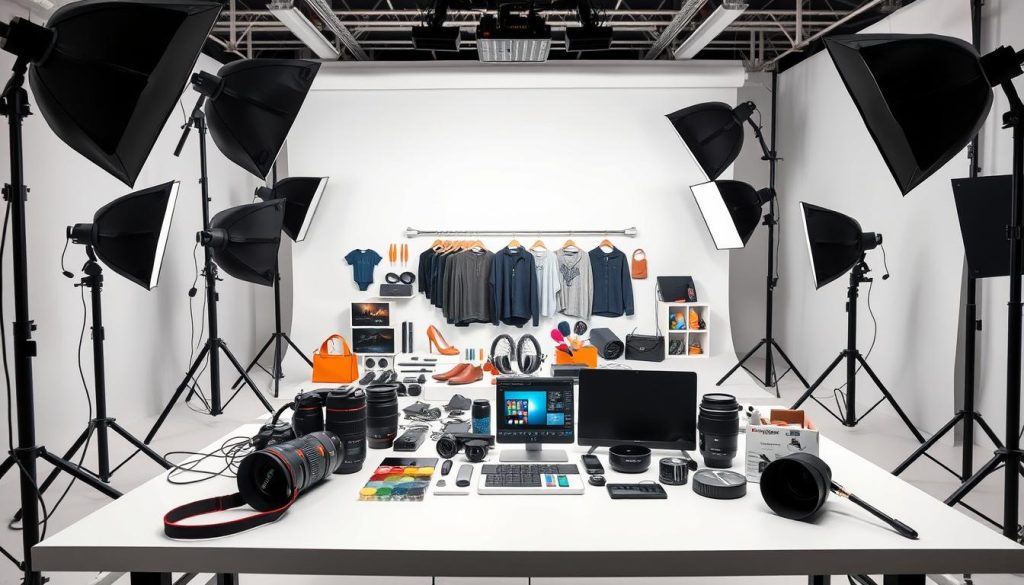
By applying these fundamental techniques, you’ll be able to significantly improve the quality of your product photos, making them more appealing to your target audience.
Background Removal and Replacement Techniques
Learning how to remove and replace backgrounds is one of the most important skills in product photo editing. It helps create clean, professional-looking images that instantly catch the eye.
Product photos can make or break a sale. High-quality images not only boost customer trust but also strengthen your brand’s overall look.
Advanced Selection Methods
To remove backgrounds effectively, you need to make precise selections. There are several advanced methods to achieve this:
Pen Tool Mastery
The Pen Tool is one of the most powerful features in photo editing software, allowing you to create precise selections, paths, and shapes with ease. It allows you to create precise paths around your subject, making it ideal for complex selections. With practice, you can achieve smooth, accurate edges that blend seamlessly with new backgrounds.
Creating Clean White Backgrounds
A clean white background helps your products really stand out. To get this effect, you need to remove the existing background carefully and make sure the new one is smooth, even, and free of shadows or color inconsistencies. Using AI-powered editing tools can simplify this process, automatically adjusting brightness and contrast.
Implementing Contextual Backgrounds
Sometimes, a white background isn’t the best choice. Contextual backgrounds can help your products tell a story or fit into a specific lifestyle. When replacing backgrounds, consider the mood and message you want to convey. Use relevant imagery that complements your product and enhances its appeal.
Color Correction and Enhancement for Product Appeal
Color correction is a crucial step in professional product photography, directly impacting how appealing your products appear to customers. When done correctly, it can significantly enhance the visual appeal of your e-commerce product images, potentially increasing sales and customer satisfaction.
Color Accuracy vs. Color Appeal
While color accuracy is important, sometimes enhancing the color appeal of your products can be more beneficial for sales. This involves making subtle adjustments to make the product look more attractive without misrepresenting its actual color.
Working with Color Grading
Color grading is the process of adding a specific color tone or style to your product images to create a consistent and appealing look. This can help create a consistent brand aesthetic and make your products instantly recognizable.
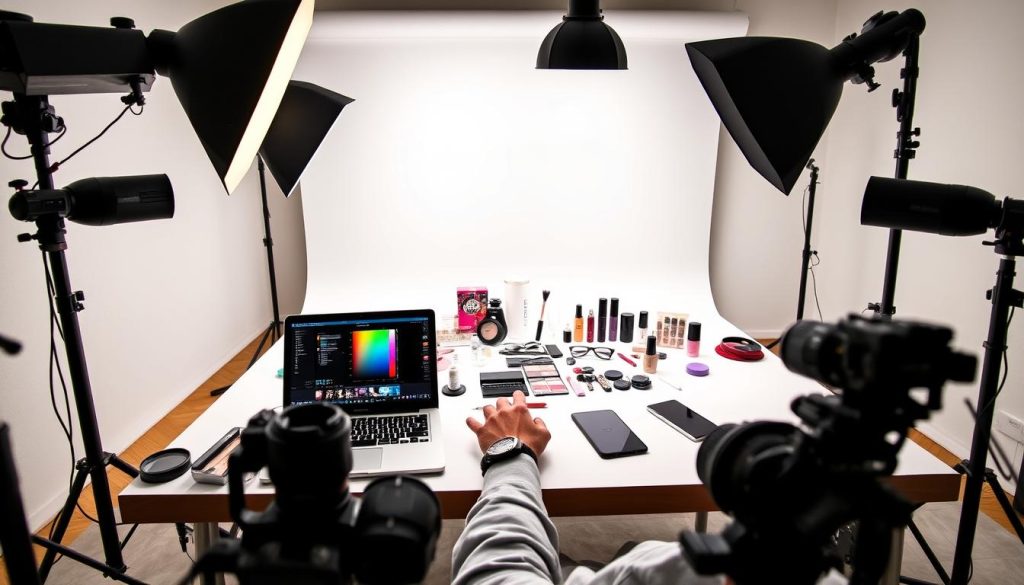
Creating Consistent Color Palettes Across Product Lines
Consistency is key when it comes to branding. Creating a consistent color palette across your product lines can strengthen your brand identity and make your products more cohesive.
Enhancing Product Textures and Details
Color correction isn’t just about adjusting hues; it’s also about bringing out the textures and details of your products. This can make your products more engaging and tangible to potential buyers.
| Technique | Description | Benefit |
|---|---|---|
| Color Grading | Applying a specific color tone or style | Creates consistent brand aesthetic |
| Texture Enhancement | Bringing out product textures | Makes products more engaging |
| Detail Refinement | Highlighting product details | Increases product appeal |
By mastering color correction and enhancement techniques, you can significantly improve the quality and appeal of your e-commerce product images, ultimately driving more sales and enhancing your brand’s visual identity.
Advanced Retouching for Different Product Categories
Advanced retouching techniques are crucial for enhancing the visual appeal of diverse product categories. Different products present unique challenges that require specialized editing approaches.
Jewelry and Reflective Products
Retouching jewelry and reflective products demands precision to capture their intricate details and luster. Techniques include:
- Enhancing sparkle and reflections
- Removing blemishes without losing texture
- Color correction for precious metals and stones
Clothing and Textiles
When retouching clothing and textiles, it’s important to preserve the fabric’s texture and the way it naturally drapes. Key techniques include:
- Removing wrinkles and creases
- Enhancing fabric texture
- Color consistency across different materials
Electronics and Tech Products
When retouching electronics, the goal is to emphasize their sleek design and showcase key features clearly. Techniques include:
- Removing scratches and marks
- Enhancing screen displays
- Improving metal and plastic finishes
Trends in Product Photo Editing
Product photo editing is witnessing a significant transformation driven by technological advancements. This year, we’re seeing a shift towards more innovative, customer-centric, and sustainable visual strategies.
AI-Generated Product Variations
One of the most exciting trends is the use of AI to generate multiple product variations. This technology allows businesses to create numerous product images with different colors, patterns, or configurations without the need for extensive photoshoots.
Optimizing Product Images for Multiple Platforms
To maximize your product’s online presence, you need to optimize images for various platforms. This ensures that your product photos look great whether they’re on your e-commerce site, social media, or mobile device.
E-commerce Platform Requirements
E-commerce platforms have specific image requirements. For example, Amazon requires product images to be at least 1000 x 1000 pixels so customers can use the zoom feature. Similarly, eBay recommends images to be at least 500 x 500 pixels.
| Platform | Minimum Image Size | Recommended File Format |
|---|---|---|
| Amazon | 1000 x 1000 pixels | JPEG |
| eBay | 500 x 500 pixels | JPEG or PNG |
| Shopify | 100 x 100 pixels | JPEG, PNG, or GIF |
Social Media Optimization Techniques
Social media platforms also have their own image requirements. For example, Instagram suggests using a 1:1 aspect ratio, while Facebook prefers 1.91:1 for link posts.
- Use the correct aspect ratio for each platform.
- Optimize images for mobile viewing, as most users access social media on their mobile devices.
- Consider using text overlays to make your product images more engaging.
Mobile-First Image Considerations
As more people shop on their mobile devices, it’s essential to make sure your product images look great on smaller screens. This means using compressed images to reduce load times without sacrificing quality.
File Format and Compression Strategies
Choosing the right file format and compression level can significantly impact your product image’s performance. JPEG is generally the preferred format for product photos due to its compression capabilities.
By optimizing your product images for multiple platforms, you can improve your e-commerce product images’ visibility and appeal, ultimately driving more sales.
Conclusion
You now have the tools and techniques to edit product photos like a professional in 2025. From fundamental techniques to advanced editing strategies, you’ve learned how to enhance your product images to drive sales and engagement.
Professional product photography is crucial for e-commerce success. By applying the skills you’ve gained, you can create high-quality product images that resonate with your target audience.
To stay ahead, continue to explore new trends and technologies in product photo editing. Experiment with AI-powered editing tools and augmented reality-ready product images to elevate your brand’s visual identity.
By mastering product photo editing, you’ll be able to showcase your products in the best possible light, driving customer engagement and ultimately, sales.
FAQ
What is the importance of professional product photography for online stores?
Professional product photography is crucial for online stores as it enhances visual appeal and customer engagement, ultimately driving sales and business growth.
How has product photography editing evolved over time?
Product photography editing has evolved from basic retouching to the use of AI-powered tools, enabling more efficient and high-quality editing.
What equipment and software are needed for professional product photo editing?
You’ll need a calibrated monitor, color management tools, and professional photo editing software such as Adobe Photoshop, as well as AI-powered editing tools.
What are the fundamental techniques for editing product photos?
Fundamental techniques include raw processing, exposure adjustments, cropping, and composition refinement, which help enhance product images.
How do I remove and replace backgrounds in product photos?
You can use advanced selection methods, such as the pen tool and channel-based selections, to remove backgrounds and replace them with clean or contextual backgrounds.
What is the significance of color correction and enhancement in product photography?
Color correction and enhancement are crucial for balancing color accuracy with appeal, creating consistent color palettes, and enhancing product textures and details.
How do I optimize product images for different platforms?
You need to understand the requirements for e-commerce sites, social media, and mobile devices, and optimize your images accordingly using techniques such as resizing, compressing, and formatting.
What are the latest trends in product photo editing for 2025?
Current trends in product photography include AI-generated product variations, images ready for augmented reality, eco-friendly and sustainable aesthetics, and interactive, engaging visuals.
How can I retouch different types of products, such as jewelry or clothing?
You can use advanced retouching techniques tailored to specific product categories, such as removing blemishes from jewelry or enhancing textures in clothing.
What is the role of AI in product photo editing?
AI-powered tools can automate tasks, such as background removal and color correction, and enable advanced techniques like AI-generated product variations.


